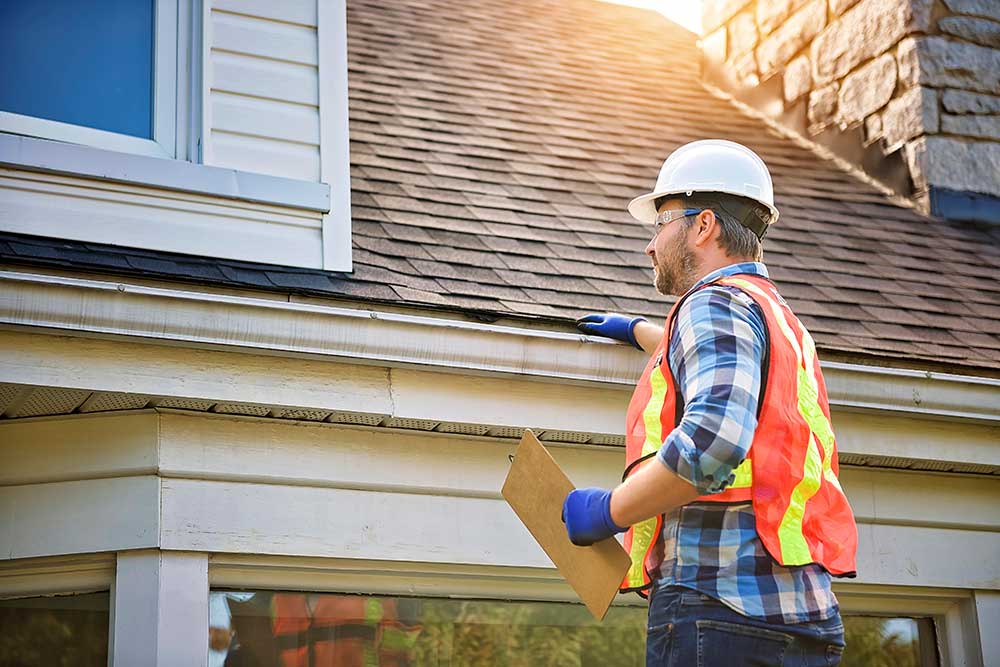The Ultimate Roof Inspection Checklist For Homeowners

Your roof works tirelessly to protect your home from the elements. Over time, though, even the best roofs can face wear and tear. Regular roofing inspections are a must for maintaining the integrity of your roof and preventing costly repairs down the line.
Knowing what to look for during these inspections will help you spot potential problems early. Here is the ultimate roofing inspection checklist every homeowner should follow to keep their roof in top shape.
Understanding Roofing Inspections
A roofing inspection is an in-depth evaluation of your roof’s condition. It goes beyond simply checking for leaks. A thorough inspection assesses the structure, materials, and potential problem areas that could lead to issues later. Many roofing experts recommend getting an inspection at least once a year to catch issues before they become serious problems.
If you are in Cape Coral, FL, or the surrounding areas, it is important to choose a trusted local contractor who understands the local weather conditions and can identify the specific risks associated with roofing in this area.
Regular roofing inspections make sure that your home remains well-protected from storm damage and other environmental factors.
Exterior Inspection: Checking The Surface
Start by inspecting the exterior of your roof. The surface is where most problems tend to manifest first. Look for signs of damage or wear, such as:
- Damaged Shingles: Check for cracked, curled, or missing shingles. These could allow water to seep into the roof structure and lead to water damage inside the home.
- Granule Loss: For asphalt shingles, check for granules that may have washed off. Excessive granule loss indicates that the shingles are aging or deteriorating.
- Moss or Algae Growth: While moss and algae may seem harmless, they can trap moisture on the roof and cause long-term damage to the materials underneath.
- Cracks in Flashing: Flashing is used around roof joints, such as chimneys and vents, to prevent leaks. Cracks or gaps in flashing can allow water to infiltrate.
Taking the time to examine these details can help you spot minor issues before they escalate into major repairs.
Structural Inspection: Assessing The Framework
A roof’s structural integrity is just as important as its surface. This part of the inspection looks for weaknesses in the support system, such as the trusses and rafters.
Look for the following:
- Sagging or Uneven Roof: A sagging roof or noticeable dips could be a sign of damaged trusses or an overloaded roof. This could eventually lead to a complete collapse if not addressed.
- Cracked Rafters or Trusses: Check for any visible cracks in the rafters or trusses that may compromise the structural stability of the roof.
- Warped Roof Decking: The decking beneath the roof covering can warp over time. Warped decking may indicate moisture problems or a failure in the roof’s structural framework.
Gutter and Downspout Inspection: Preventing Water Damage
Your roof relies on the gutter system to divert water away from your home’s foundation. During your inspection, examine your gutters and downspouts for the following:
- Clogs and Debris: Check gutters for leaves, twigs, and other debris that could prevent water from flowing freely. Blocked gutters can cause water to back up and damage your roof and walls.
- Leaks in the Gutters: Inspect for leaks or holes in the gutters that could cause water to spill over and pool around the roofline or on the ground near your foundation.
- Damaged Downspouts: Make sure the downspouts are securely attached and directing water away from the house. Any leaks or blockages in the downspouts could allow water to seep into the roof structure.
A functioning gutter system is necessary for keeping your roof and home safe from water damage. Regularly clearing debris from your gutters will extend the life of your roof and prevent water-related issues.
Interior Inspection: Identifying Hidden Damage
The roof’s exterior may show signs of damage. However, the interior of your home can reveal issues that are harder to spot. Check your ceilings, walls, and attic for:
- Water Stains: Water stains on your ceiling or walls could point to a leaky roof. The source of the leak may not always be directly above the stain, so further investigation may be necessary.
- Mold and Mildew: The presence of mold or mildew in the attic or on the ceiling could indicate long-standing moisture problems. Mold growth often means there is a persistent leak or inadequate ventilation.
- Pest Infestation: Birds, rodents, and insects can cause damage to the roof, either by nesting or burrowing into the roofing material. Look for signs of pest activity, such as droppings or chewed areas.
Chimney, Vents, and Skylight Inspection: Checking Seals and Flashing
Pay special attention to roof openings where chimneys, vents, and skylights are installed. These areas are prone to leaks if not properly sealed or maintained.
Inspect the following:
- Chimney Flashing: Flashing around chimneys can deteriorate over time, allowing water to leak into the roof. Check for rust, cracks, or missing pieces of flashing.
- Vents and Skylights: Look for cracks or damage to vent pipes, skylights, and their seals. These areas are common culprits for leaks.
- Sealant Integrity: Examine the caulk and sealant around vents, skylights, and chimneys. Old or cracked seals should be replaced to prevent leaks.
Attic Inspection: Checking for Proper Ventilation
A well-ventilated attic is important to the health of your roof. Without proper airflow, moisture can accumulate and lead to mold growth and rot. During your inspection, check for the following:
- Proper Insulation: Insulation should be evenly distributed across the attic floor. Gaps or inadequate insulation can lead to temperature imbalances that strain your roof.
- Ventilation System: Make sure that the attic has adequate vents to allow air to circulate. Poor ventilation can lead to excess heat or moisture buildup, both of which can damage the roof.
- Signs of Water Damage: Look for signs of water infiltration in the attic, such as damp insulation, mold, or visible water stains.
Roof EZ is your go-to source for dependable residential roofing services in Florida, with a focus on detailed roof inspections that help extend the life of your roof.
Our skilled team identifies hidden issues and provides honest recommendations. Whether you need an inspection or a full roof replacement, contact us today for expert support.

